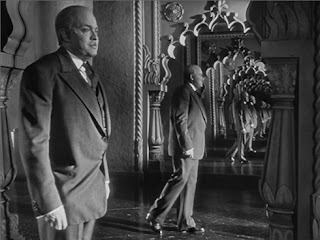Last wednesday I was comming back from work on my bike when I stumbled across this stencil painting by the 101. It obviously looks like Banksy's work, and since I knew he was in California (the Oscar's night had been 3 days before), chances were it was an actual Banksy. I looked on the internet and apparently it is. Woohooo, how cool is that!
I was never a street art follower until a few years ago
Gabriela Berti approached me to help her put together the videos and images she had recollected for her book,
Pioneros del Graffiti en España in a mini-documentary that would go with the book's presentation (
see). I am still a neophyte on the matter but I must confess it's a truly fascinating world. Not only for the art itself, but in regards with the artistic movement and commmnity -since it is not very legal.
So I got curious and decided to watch the documentary for which Banksy was nominated to the Oscar: "Exit throught the gift shop". I have never seen anything like it since Orson Welles'
F for Fake. It is clever, witty, deeper in message than it looks and I don't buy for a second this is an actual documentary.
Banksy's Thierry Guetta is like Welles' Elmir de Hory, the vehicle around whom a very interesting dissertation about art -and its value- is made. We live in a consumer society and art has never ever been so available and easy to reproduce. Through repetition, art becomes meaningless but iconic, and that's what pop culture is all about: icons. Banksy is now an icon, as Thierry Guetta
aka Mr.Brainwash and that's why all these art galleries want his woks and collectors pay ridiculous amounts of money for his pieces. If Guetta's persona is a Banksy's fabrication, then it is most likely that his rip-off work is actually Banksy's. So what is the value of that piece, then? As Welles quotes in his film, Picasso claimed he was, too, capable of painting a false Picasso.
Guetta becomes a monster, and Banksy is like Dr. Frankenstein, because he created the monster. As I read it, Guetta represents Banksy's increasingly popular persona, something he cannot control. He cannot be held responsible for people wanting to pay thousands of dollars for his paintings. Banksy says in the film: "
Guetta didn't play with the rules, but then again there are no rules". That is the whole statement of the film. There are no rules in art. Once the fever passes and the hype is gone, only then, with time, we will be able to tell if it was good or not. If it will remain or it will fade like a trend. Time is the only judge of Art.



